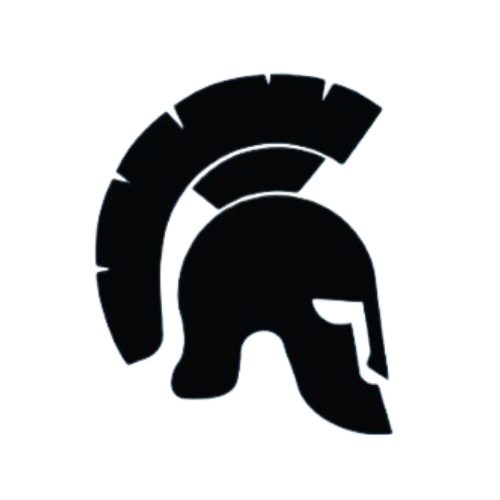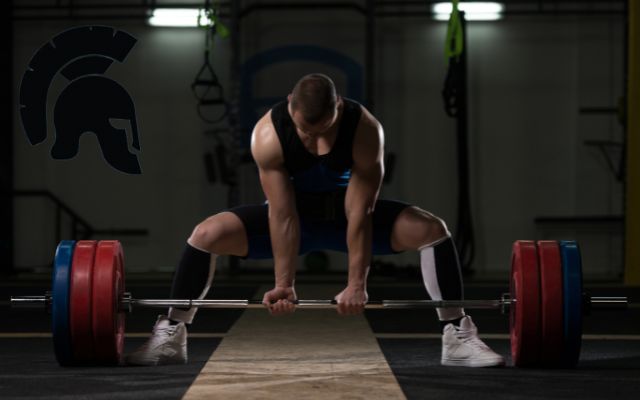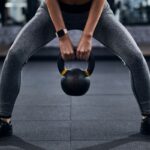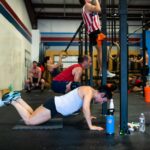Many lifters grapple with the perceived benefits of sumo deadlifts versus conventional deadlifts. Some worry about the added stress on the lower back, while others question the transfer of strength gains to other exercises or daily life. This post aims to address these common concerns, highlighting the benefits of sumo deadlifts and showcasing how they can complement a well-rounded training program.
Addressing Common Concerns
Lower Back Pain/Injury
The wider stance in sumo deadlifts can indeed increase the potential stress on the lower back compared to the more compact stance in conventional deadlifts. However, this risk is manageable with proper form. You, as a lifter, must prioritize maintaining a neutral spine throughout the lift. Incorrect form, or trying to lift too much weight too soon, is the primary driver of injury, not the stance itself.
Mitigation strategies are crucial. Thorough warm-up and stretching routines focusing on the back, hamstrings, and glutes are paramount. Gradual progression in weight is key; avoid jumping into heavy weights before your body is prepared. Finally, your body will signal when something feels off. Listen to these cues and don’t push through pain, always prioritize safety.
Comparing the risk to conventional deadlifts, while a wider stance might potentially accentuate the stresses on the lumbar spine in some individuals, the risk is highly dependent on individual biomechanics and technique. With proper form, sumo deadlifts can be safe and effective.
Lack of Strength Transfer
Some believe sumo deadlifts may not translate strength gains to other lifts or everyday activities as effectively as conventional deadlifts. This perception often arises from a limited understanding of the different muscle activation patterns. You must understand that strength is a complex system, and there can be variations in how different exercises affect muscle recruitment.
Counter to this argument, sumo deadlifts target a unique blend of muscle groups, including the hamstrings and glutes, in addition to the core, and this can lead to strength gains in areas that conventional deadlifts might not fully address. Furthermore, sumo deadlifts are highly beneficial in building strength and power in different patterns. Different patterns of strength are often required for specific tasks, and sumo can be precisely calibrated to provide strength gains for such needs.
Studies on the transfer of training have shown positive results in specific areas, depending on the exercise and individual. Ultimately, a well-designed training program should include a variety of exercises to ensure a holistic approach.
Increased Hip/Knee Stress
The wider stance in sumo deadlifts can potentially place greater stress on the hips and knees. This is an issue that relates to the range of motion required for the lift and the potential for improper technique. This is a problem if a person is predisposed to hip or knee pain.
Rigorous injury prevention methods must be applied. The paramount factor is correct technique. Maintaining proper hip and knee alignment throughout the movement is vital to minimize the risk of injury. Ensuring your feet, knees, and hips are in proper alignment during the lift is essential in minimizing the stress on these joints.
Proper technique hinges on the individual. Individual biomechanics should be considered when designing an appropriate training program, and modifications to the posture might be necessary. An important consideration is to work with a knowledgeable trainer to establish ideal form.
Difficulty Learning Technique
Sumo deadlifts have a unique foot placement and movement pattern, contrasting with the more familiar conventional stance. This difference often presents a hurdle for beginners, requiring careful attention to detail and consistent practice. This is a crucial factor for success in the deadlift, which can be a difficult exercise in the first place.
Effective training programs incorporating progressive overload and consistent practice are indispensable for mastering sumo deadlifts. Consult with a coach or experienced lifter for guidance and specific training protocols. Coaching is crucial for developing and maintaining correct form and this can be one of the most important aspects of this exercise.
Acknowledging that learning sumo deadlifts demands dedication and time, the benefits are often well worth the effort. Proper learning is ultimately beneficial to building strength and understanding the mechanics of the lift.
Reduced Overall Strength compared to Conventional
There’s a common perception that sumo deadlifts might not build overall strength as effectively as conventional deadlifts. A key element in understanding the nature of strength training is knowing that strength varies in form, and not everyone needs the same strength. It depends heavily on the muscle groups, which is different between the two lifts.
However, sumo deadlifts cultivate strength in different areas of the body, contributing to a more well-rounded physique. Sumo deadlifts target muscle groups in the hips and legs that might be underdeveloped in a conventional lifting regimen. Sumo deadlifts provide a holistic approach to developing a strong, well-rounded physique.
Defining “overall strength” is important. If a lifter is focused on specific strength requirements, sumo deadlifts can often address those needs more efficiently, offering better engagement of specific muscle groups. This is a factor that should be considered to ensure the best possible training regimen.
Suitability for Specific Goals
Powerlifting
In powerlifting, the conventional deadlift is often considered the gold standard. However, sumo deadlifts can be a valuable supplementary exercise for powerlifters aiming to develop specific strength attributes. This is a key point in distinguishing between training for different results.
There is an important distinction between conventional and sumo deadlifts for powerlifting goals. Sumo deadlifts can be advantageous for lifters aiming to emphasize posterior chain strength or for developing a stronger foundation in their technique. This also helps in determining your strengths and weaknesses, and how that impacts your training regimen.
The best option depends heavily on the individual lifter’s biomechanics and strengths.
General Strength and Athletic Performance
Sumo deadlifts can be an excellent addition to general strength and athletic training programs. They can be highly beneficial for developing balance, agility, and power. Sumo deadlifts can also be useful for strengthening specific muscles that are vital for athletic performance. Athletes may also find this beneficial for developing core stability.
Sumo deadlifts can enhance overall athletic performance by improving strength, power, and stability. This is one of the key points in considering this exercise, and its ability to enhance specific elements of fitness.
The optimal approach is a personalized strategy. Tailoring the training regimen to individual goals and body type is essential.
Individualized Approach
Ultimately, the suitability of sumo deadlifts depends on the individual’s goals and physical attributes. Sumo deadlifts can be an excellent tool in a broader workout plan if tailored correctly for individual needs. Tailoring training regiments to your specific attributes is important in achieving maximum results.
Adapting the approach to individual needs and strengths can help ensure progress and minimize the risk of injury. This can impact the potential benefits and drawbacks of the exercise for a specific person.
Personalized guidance from a qualified coach is often beneficial in optimizing your training regime.
Limited Application in Daily Life
Arguments that sumo deadlifts don’t translate to real-world strength gains as effectively as conventional deadlifts are often based on a narrow view of “real-world strength.” Focus on improving the overall ability to engage your muscles in an efficient manner. You can enhance strength in ways that benefit your daily life significantly. This should be considered in context when determining if an exercise has real-world applicability.
Sumo deadlifts, like other strength training, improve overall strength. This increased strength will have demonstrable results in real-world activities. Consider this in your training to get a more comprehensive result. You must recognize this for maximum effect.
Examples of how improved overall strength impacts daily tasks abound. Everyday tasks, such as lifting groceries or moving furniture, become easier with improved strength. This has implications for different levels of engagement, and is vital to consider when deciding on whether to use this exercise.
Comparison to Conventional Deadlift Benefits
The perception of conventional deadlifts as the superior lift is common, often stemming from their prominence in powerlifting. However, sumo deadlifts possess unique strengths, often addressing specific needs and strengths. There are significant benefits to understanding the variations between different deadlifts.
Sumo deadlifts target different muscle groups and movement patterns compared to conventional deadlifts, often engaging the posterior chain more effectively. Understanding this difference is important when attempting to apply it to a training regime.
Both styles can be used effectively in a complementary training program. A balanced approach incorporating both conventional and sumo deadlifts can contribute to a more comprehensive strength development plan. Understanding the specific differences between exercises can help you in creating the best plan for your training needs.
Benefits of Sumo Deadlifts
Sumo deadlifts offer a multitude of benefits beyond just building raw strength. They enhance your core stability, helping to improve balance and coordination and potentially improve athletic performance. Understanding the benefits is crucial in considering if this is the right approach for you.
These lifts significantly contribute to building strength in various muscle groups, including the hamstrings, glutes, and core. Considering how this can be used to your advantage in your training regime can be vital in considering whether this is the right approach for you.
The unique activation patterns during sumo deadlifts can lead to increased muscle hypertrophy and growth. Muscle hypertrophy is a key component of developing overall physical strength.
Proper technique is paramount, as it minimizes injury risk and maximizes benefits. This is a vital consideration in determining the suitability of this exercise for your training.
Proper Technique and Form (using the example)
Conclusion
Sumo deadlifts are a valuable tool in a well-rounded strength training program. While some potential drawbacks exist, proper form and a personalized approach can mitigate these concerns. This consideration is crucial for ensuring that you are engaging in the appropriate training regime. Remember, consistent and tailored training will maximize the benefits and minimize the risk of injury, helping you reach your individual fitness goals. You must consider your body type when determining if this exercise will be most beneficial to your plan.








